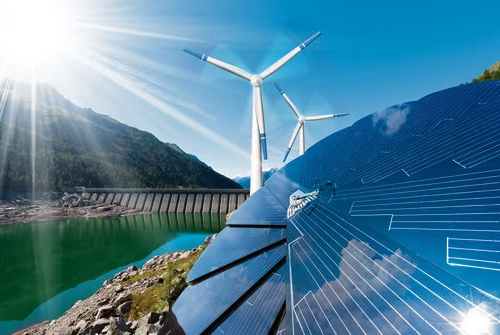In Short : The statement suggests that the Biden administration is seeking collaboration with India to counter China’s dominance in the clean energy sector. This could involve joint efforts to advance renewable energy technologies, strengthen clean energy supply chains, and address global climate challenges. The partnership aims to bolster the role of democratic nations in shaping the future of clean energy and combating climate change.
In Detail : Improved U.S.-India relations coupled with an aggressive White House push to advance the clean energy transition, ahead of China, is unearthing fertile ground for Indian energy companies to grow their U.S. presence.
At least half a dozen of India’s leading renewable energy companies have made plans this year to invest in and/or build energy facilities in the U.S. to capture some of the $369 billion in tax incentives offered in the 2022 Inflation Reduction Act.
Daniel Dus, chief executive of ACME Cleantech Solutions, a subsidiary of Gurgaon, India-based ACME Group said, “When we look at where to invest dollars right now, our stated objective is to invest 40% of corporate dollars in developing assets outside of India, and the U.S. is at the very top of our list.”
“That is directly due to the Inflation Reduction Act, and other Biden policies,” he said, citing also the 2021 Infrastructure Investment and Jobs Act.
ACME plans to break ground in 2025 on a 1.6 gigawatt (GW) solar facility and integrated green hydrogen and ammonia facility in Port Victoria, Texas.
The company plans to produce 1.2 million metric tons per year of hydrogen that can be sold or converted to ammonia for the global market as early as 2027.
Because of pollution reduction mandates on the shipping industry, ACME is considering offtake agreements with shippers converting to ammonia-based engines and fuel, including bunker fuel. Offtake agreements are pre-construction deals between buyers and sellers to secure a market for the builder and supply for the buyer.
For its green hydrogen, ACME expects to receive the U.S. government’s highest subsidy for hydrogen production—$3 per kilogram of green hydrogen produced.
Dus calls the tax incentive from the new law “absolutely critical,” without which “Our project would not exist. It’s quite simple,” he said.
The IRA tax incentive has “driven our commitment to invest tens of millions of dollars in the development of this asset,” Dus said.

